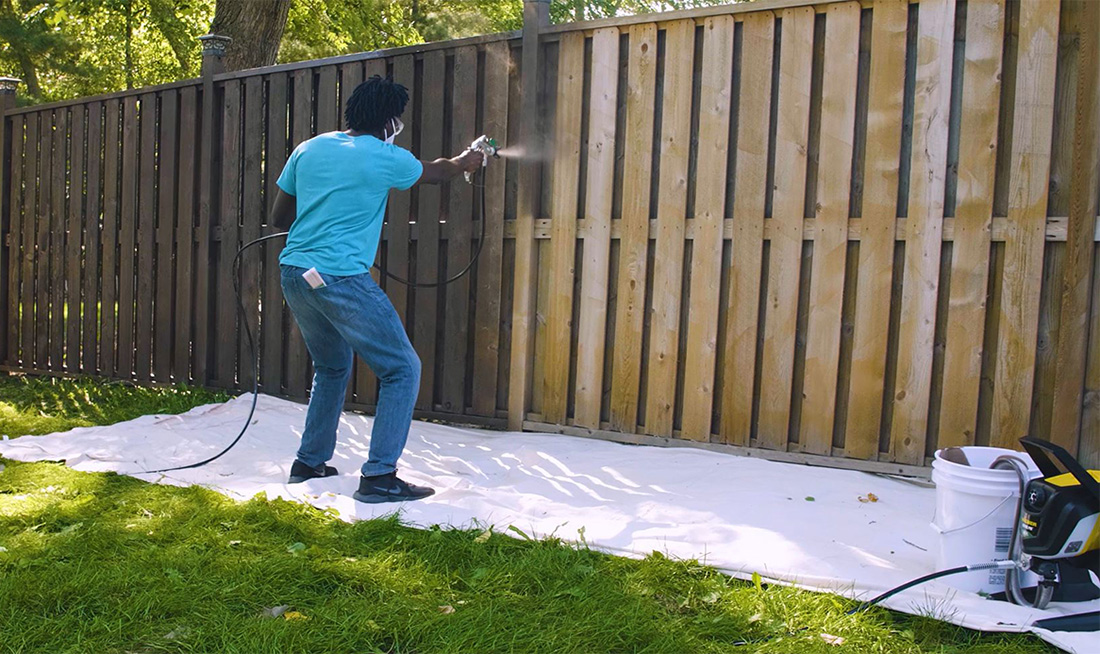The Ultimate Guide to Fencing Discoloration: Tips and Techniques You Need to Know
In the world of home maintenance, fencing staining often becomes a task that calls for attention but is frequently forgotten. The procedure involves even more than just slapping on a layer of stain; it requires precision, understanding, and the appropriate techniques to make sure a lasting and aesthetically appealing outcome. Whether you are an experienced DIY enthusiast or a house owner wanting to boost the curb charm of your property, recognizing the nuances of fencing discoloration can make a substantial distinction. Allow's check out the complexities of this relatively simple yet remarkably complicated task to unlock the keys that can transform your fencing from a plain border to a standout feature of your exterior room.
Advantages of Fence Discoloration
What advantages does fence discoloration offer to house owners looking for to improve both the appearance and durability of their exterior structures? Fencing discoloration offers various benefits that make it a prominent selection for property owners looking to secure and improve their fences.
In addition, fencing discoloration assists to shield the timber from the components, such as rain, snow, and UV rays. This protection not only avoids the timber from decaying and decaying yet likewise expands its life-span, conserving house owners money on costly repairs or replacements in the future. Fence Staining Service. In addition, staining develops an obstacle against pests, such as termites and carpenter ants, which can create substantial damages to unattended timber fences
Picking the Right Spot

One more element to think about is the degree of defense you desire for your fence. Transparent stains offer marginal protection against UV rays and wetness, while semi-transparent and strong discolorations provide increased security. If your fencing is subjected to extreme weather problems, a solid discolor may be the very best option to make sure optimum resilience.

Preparing Your Fencing
Prior to using the selected discolor, detailed preparation of the fence surface area is necessary to make certain optimum results. Begin by cleansing the fence to eliminate dirt, debris, and any kind of old stain or paint. Utilize a pressure washing machine or a stiff brush with a cleansing service to scrub the surface area thoroughly (Fence Staining Nashville). Enable the fence to completely dry entirely prior to proceeding. Next off, check the fence for any type of signs of damage such as cracks, splinters, or loose boards. Make necessary repair work to make certain the fencing is structurally audio.
After cleansing and repairing, it is essential to sand the fence to produce a smooth surface area for the stain to comply with. Utilize a medium-grit sandpaper to remove any type of harsh patches or flaws. Clean down the fencing with a tack fabric to eliminate any kind of continuing to be dirt bits.
Using the Stain

When applying the stain, function carefully section by area, starting from the leading and moving downwards to avoid drips and guarantee even insurance coverage. Usage long, smooth strokes to use the discolor in the instructions of the wood grain, permitting for much better infiltration and a much more professional coating.
Maintaining Your Stained Fencing
To ensure the long life and visual appeal of your tarnished fence, routine maintenance is essential. Additionally, it is crucial to keep an eye on the sealer on your stained fence and reapply it as required to shield the timber from moisture and UV damage. By complying with these maintenance ideas, you can make sure that your discolored fencing stays in leading condition for years to come.
Verdict
In final thought, fence staining offers numerous advantages such as protection against weathering and improving the aesthetic allure of your property. By picking the right stain, correctly preparing your fence, applying the tarnish correctly, and preserving it routinely, you can guarantee your fencing continues to be in top problem for several years to come. Adhering to these pointers and techniques will certainly aid you attain a perfectly stained fence that will certainly stand the examination of time.